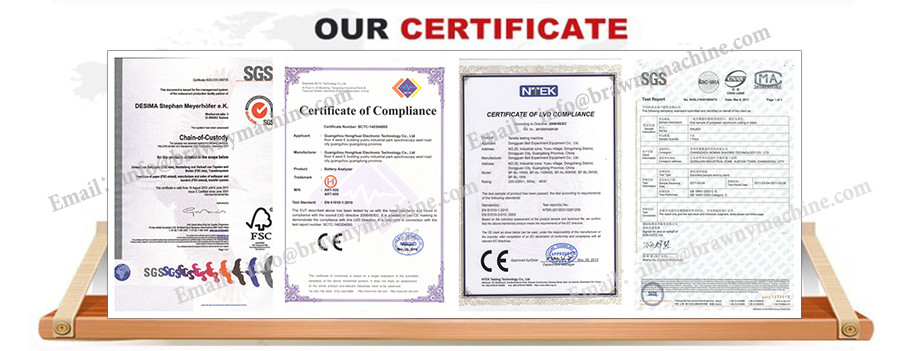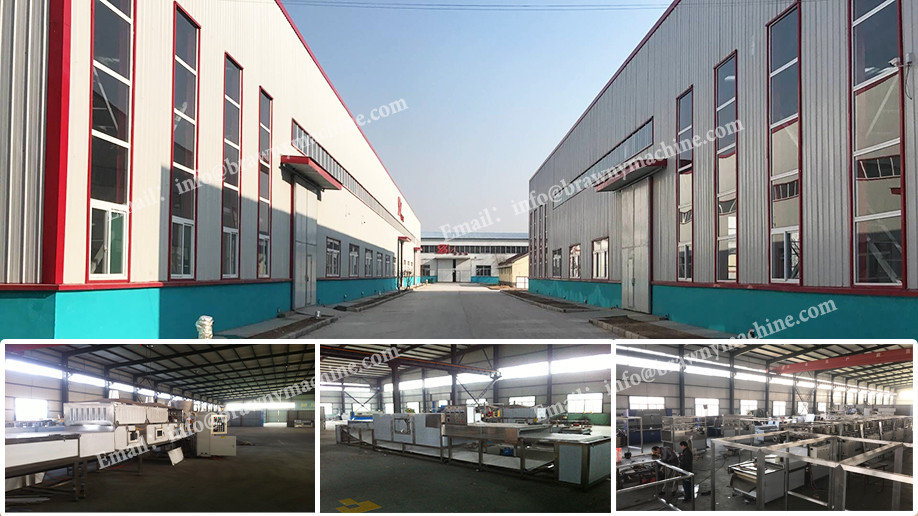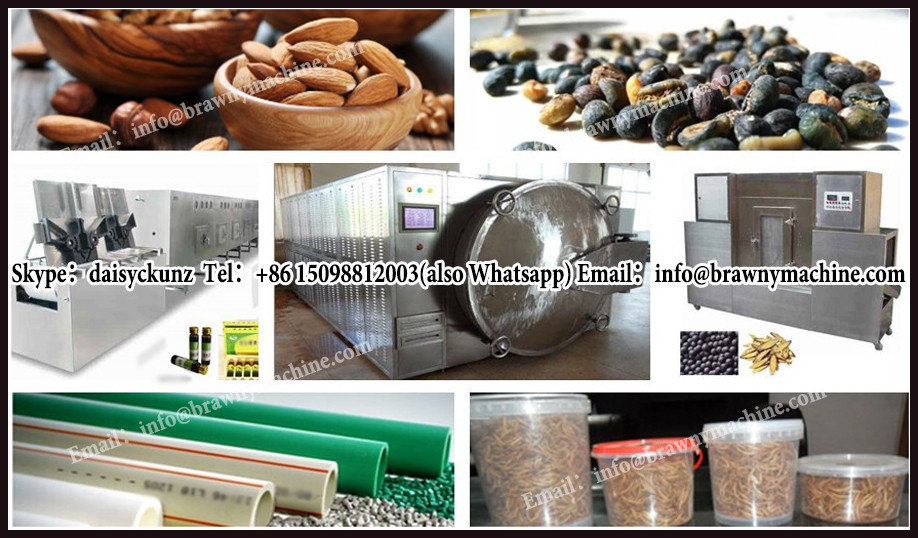batch type laboratory microwave oven


| Name | batch type laboratory microwave oven |
|---|---|
| Type | batch type |
| Model | BDMD-M-V-6 |
| Microwave frequency | 2450±50 MHz |
| Input voltage | Three-phase AC380V |
| Microwave power | 6kw |
| Color of the oven | Silver-white |
| Material of the oven | Industrial stainless steel |
| Quantity of tray | 1-3 |
| Microwave leakage limit | ≤1 mw/cm2 |
| Temperature | 60-120 °C |
| Cooling method | water or air |
| Weight | 550 kg |
| Dimension | 1.2*1.0*1.6m |
| Installation area | 3.0*2.0*2.5m |

As compared with conventional drying methods, which are heating from the outside to the inside by heat conduction, microwave show so-called volume heating with the following advantages:
- a temperature gradient directed towards the surface, i.e. temperatures inside are higher than outside, giving rise to a higher partial pressure that drives the evaporating liquid to the surface
- consequently, the superficial layer does not dry up completely and the surfaces remain permeable
- the liquid evaporating inside the product is emitted through the porous structure of the solid material’s macro-capilbatch type laboratory microwave oven system, resulting in a high drying velocity
- the heating of water and most organic solvents occurs selectively - due to the greater dielectric losses of water as compared to the product to be dried
- swift and thorough drying of moist products with low thermal conductivity
- static drying of thick layers without frictional losses
- high total efficiency of energy application
- high-speed control of the energy transport
- short processing times, i.e. suitable for automated manufacturing
| Drying method | Microwave | Boiling | Hot air | Vibrating |
|---|---|---|---|---|
| Temperature | low | high | high | high |
| Time | short | long | long | short(several times) |
| Quality | very good | good | normal | normal |
| Loss | none | little | much | much |
| Solubility | good | good | normal | bad |
| Appearance | very good | good | normal | noraml |
| Consumption | low | high | high | high |
| Continuous | available | difficult | N/A | difficult |
| Sterilization | good | bad | bad | bad |
| Drying method | MW+batch type laboratory microwave oven | Freezing | batch type laboratory microwave oven | Spray |
|---|---|---|---|---|
| Temperature | low | very low | low | high |
| Time | short | long | very long | short |
| Quality | good | good | normal | bad |
| Loss | none | little | none | much |
| Solubility | very good | very good | normal | normal |
| Appearance | good | good | bad | normal |
| Consumption | low | very high | high | very high |
| Continuous | available | difficult | N/A | available |
| Cost | low | very high | low | low |












1.What is microwave?
Microwaves are a form of electromagnetic energy with frequencies between 300 MHz and 300 GHz, generated by magnetrons under the combined force of an electric and a magnetic field perpendicular to each other.
2. What is the advantage of batch type laboratory microwave oven compare to Conventional equipment?
Conventional is a surface drying and sterilization method, which is not only slow, but also non-uniform with the surfaces, edges and corners of mushrooms or fungus. The imperfect drying and sterilization will cause product rejections, waste energy and extend process time.
Microwave is a direct method of drying and sterilization. Energy is transferred through the material electro-magnetically, not as a thermal heat flux. Therefore, the effect of drying and sterilization is uniformity and process time is short.
Microwave mushrooms sterilizer and dryer could completely preserve the original color, fragrance, nutrition and other properties of spices.
3. How about safety?
Using scientific structure and patented suppression system, BODA industrial microwave drying machine no threat of electromagnetic radiation to the health and safety of equipment operators.
4.What about maintenance?
In addition to downtime for cleaning and inspection, conventional sterilizers and heat exchangers need periodic servicing with an expensive inventory of parts and a highly trained labor force. For microwave dryer and sterilizer, the only part that requires maintenance is the magnetron. In the event of a malfunction or misuse through incorrect operation, this can easily be replaced in less than thirty minutes. Generally, BODA recommends that the magnetron of industrial microwave dryer and microwave sterilizer be replaced annually or after 8,000 hours of operation, whichever is sooner.
batch type laboratory microwave oven